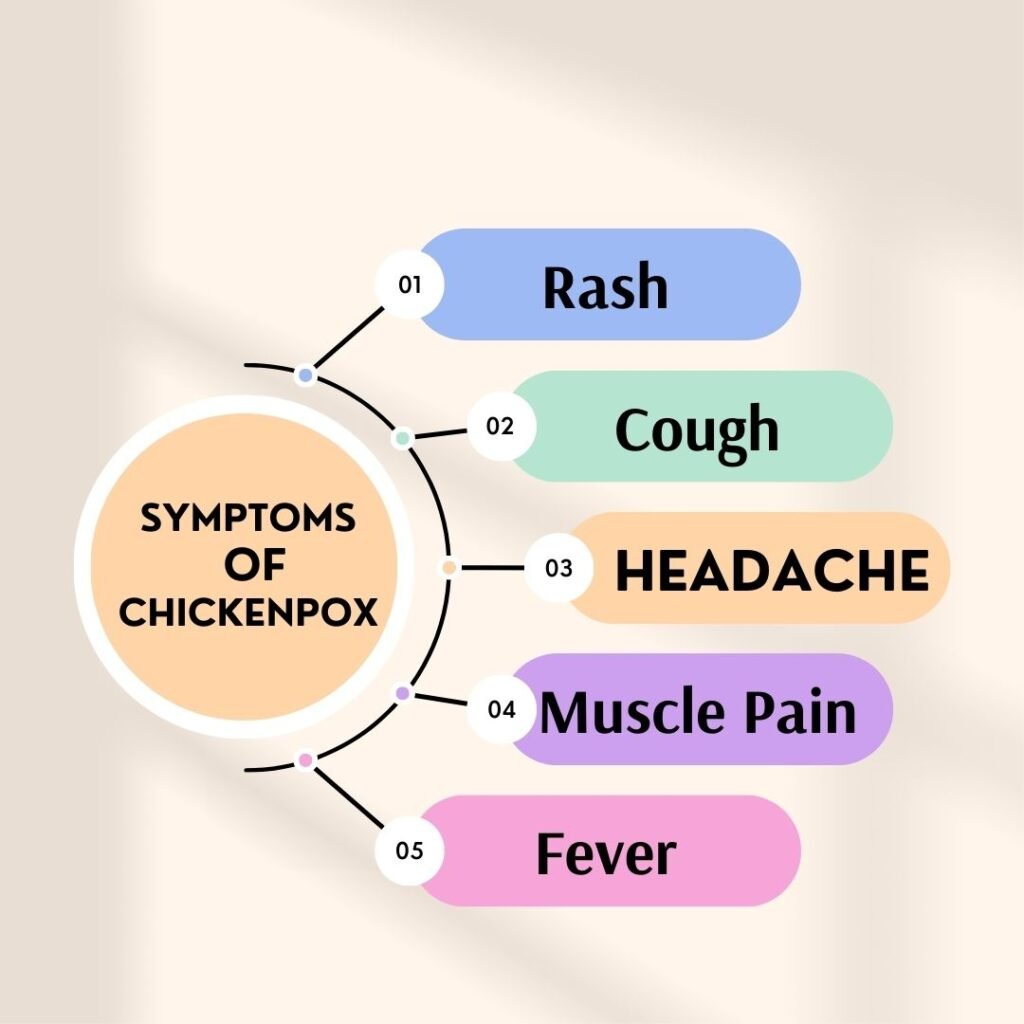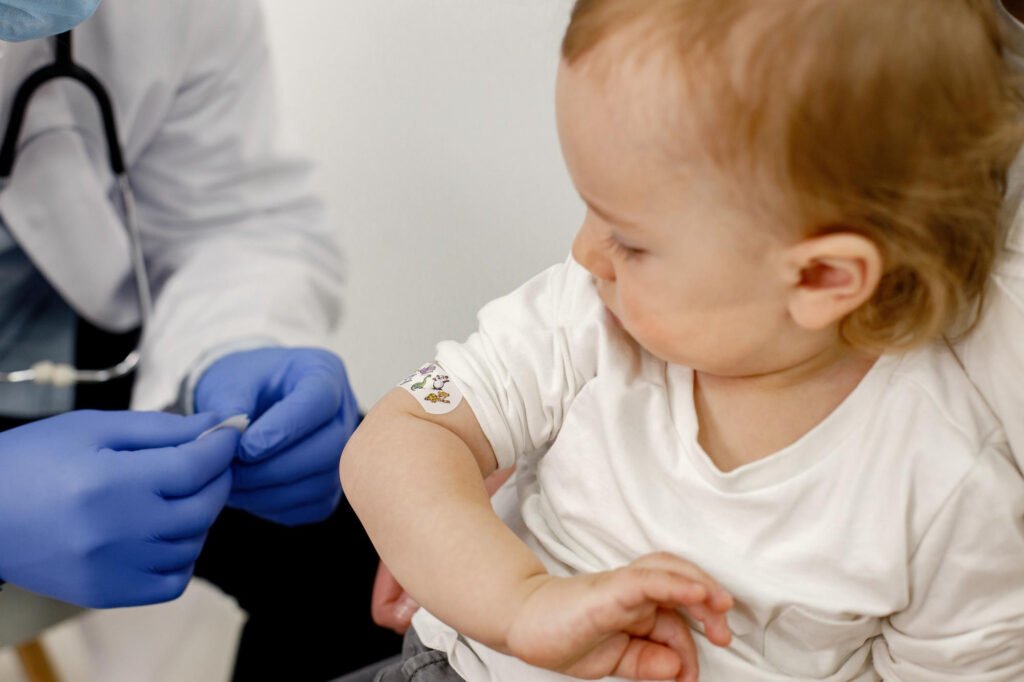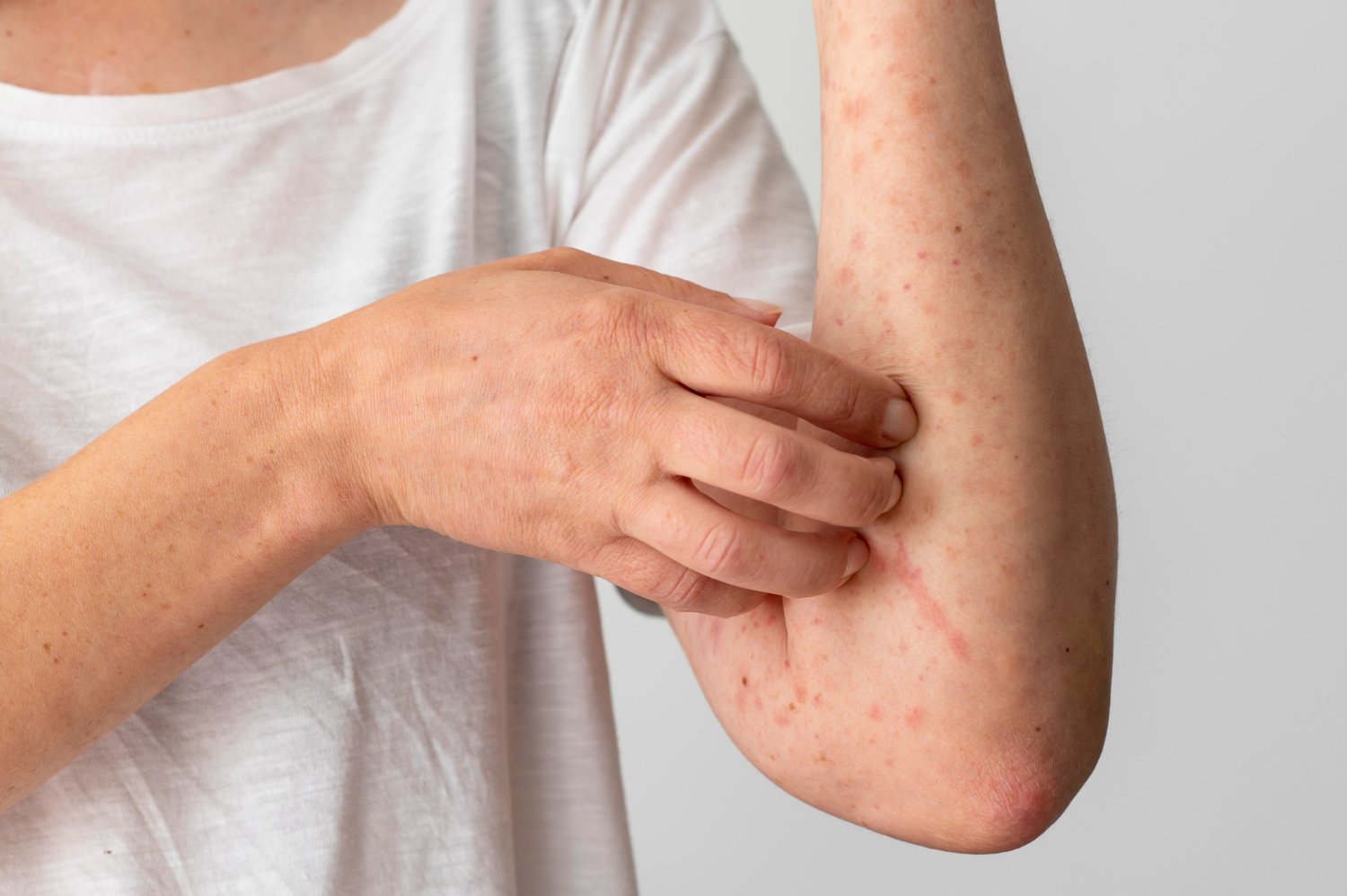Chickenpox is a prevalent childhood ailment, typically impacting children aged 2 to 10. An intensely itchy skin rash accompanied by red blisters and a mild fever characterizes this infectious viral condition. Although chickenpox can be discomforting, it seldom leads to severe consequences in generally healthy children.
What does chickenpox entail?
Chickenpox, also known as varicella, is a highly contagious viral infection that primarily affects children. A notably itchy skin rash adorned with red blisters characterizes it, often accompanied by a mild fever. Notably, the prevalence of varicella has significantly decreased due to widespread vaccination among children.
If an individual contracts chickenpox, they become contagious one to two days before the rash appears. Employing precautionary measures and maintaining good hygiene practices is crucial to curbing the spread of the virus to others.
While chickenpox can be an unpleasant experience, it typically poses minimal risks to the health of otherwise healthy children. However, it is important to note that the infection can manifest more severely in newborns, adults, and individuals with weakened immune systems. Taking necessary precautions and staying informed about the symptoms can contribute to managing and preventing the spread of chickenpox.
What are the signs of chickenpox?
Individuals who acquire chickenpox typically experience a general sense of unwellness initially. The virus induces symptoms such as headaches, muscle pain, and an elevated body temperature. Subsequently, a characteristic itchy skin rash emerges, typically appearing on the face and trunk initially before spreading to the scalp, arms, and legs.

In certain instances, the genital area and mucous membranes may also be affected. The predominant discomfort arises from intense itching, which can disrupt sleep. Notably, in adults with chickenpox, the rash may either not develop or may not extend over the body as commonly observed in children.
Chickenpox typically involves a fever lasting between 3 and 5 days, seldom surpassing 39 degrees Celsius. The rash manifests as small, red spots and bumps, potentially evolving into blisters filled with initially clear fluid, later adopting a cloudy appearance.
Over the course of several days, these blisters dry out, forming a crust or scab that eventually detaches. Generally, the blisters resolve within 3 to 5 days. Sometimes, people liken the appearance of blisters on the skin to a “starry sky” due to varying stages of development. The number of blisters varies greatly from person to person.
What is the origin of chickenpox?
Chickenpox is a viral infection caused by the varicella-zoster virus, a member of the herpes virus family. The transmission of this virus occurs through droplet infection or direct contact between individuals.
Contracting the virus is as simple as inhaling tiny droplets of saliva that an infected person releases into the air through breathing, coughing, sneezing, or speaking. Furthermore, scratching or bursting the chickenpox blisters can spread the contagious fluid, posing a risk of a ‘smear infection.
Almost any form of contact with an individual carrying the chickenpox virus can result in infection. Typically, only those who have previously experienced chickenpox or have received vaccinations against it possess immunity to the infection.
Understanding the Progression
Upon infection, the onset of initial symptoms typically occurs approximately two weeks later, though they may manifest as early as one week post-infection. Alternatively, the incubation period, signifying the time span between infection and the emergence of initial symptoms, may extend up to three weeks in certain cases.
In children, chickenpox generally resolves within a two-week timeframe. Conversely, adults often contend with a more intense infection, characterized by an extended recovery period and heightened symptom severity. The potential for complications is also elevated in adults.
Following a bout of chickenpox, individuals typically develop immunity against the virus for the remainder of their lives, significantly reducing the likelihood of subsequent infections.
Read also: LOW BACK PAIN (LBP): UNRAVELING TYPES, CAUSES, AND SOLUTIONS
Preventing Chickenpox
The Joint Committee on Vaccination and Immunization ( JCVI )
The Joint Committee on Vaccination and Immunisation (JCVI) has advised the inclusion of a varicella vaccine, also known as chickenpox, in the standard childhood immunisation schedule in the UK. The proposed vaccination regimen involves administering two doses to every child, with the first dose given at 12 months and the second at 18 months of age.
Individuals who have neither contracted chickenpox nor received vaccination still have the option to get vaccinated if they come into contact with an infected person. In such cases, they should administer the vaccine within five days of contact to either prevent infection or alleviate symptoms.

The World Health Organization (WHO) reported in 2014 that complications related to varicella-zoster virus (VZV) infection led to more than 4 million hospitalizations and over 4000 deaths worldwide annually1.
In England, the prevailing belief is that most of the hospital-related challenges posed by VZV are experienced by individuals with a functioning immune system. Consequently, these issues have the potential to be prevented through vaccination2.
Pregnant women are not eligible for the chickenpox vaccine. However, if they face a risk of infection, they can receive antibodies that combat the virus through passive immunization. This approach is also applicable to newborns if their mothers contract the virus shortly before or after giving birth.
Individuals who have been vaccinated may still get infected with chickenpox in rare instances. But, in most cases, the symptoms are generally less severe, and the risk of complications is reduced.
How to Diagnose?
Diagnosis by doctors often relies on the distinctive skin rash associated with the illness. Only if the disease does not follow its usual course might a blood or blister test sample be collected and examined for viral presence.
In instances where it is necessary to ascertain prior exposure and immunity, doctors may employ an antibody blood test. Health professionals often recommend this particular test for certain groups, such as pregnant women, to assess whether they have previously had chickenpox and developed immunity.
How is chickenpox managed?
Chickenpox, a highly transmissible illness stemming from a viral infection, has witnessed a significant reduction in occurrences with the advent of the chickenpox vaccine. Despite this progress, there remains a yearly occurrence of children contracting chickenpox. Fortunately, parents can implement various measures at home to alleviate their children’s symptoms and avert potential skin infections.
A prevalent indicator of chickenpox is the emergence of an itchy rash that evolves into fluid-filled blisters that subsequently form scabs. Initially appearing on the face, chest, and back, the rash eventually extends to cover the entire body. Additional manifestations encompass fever, fatigue, loss of appetite, and headaches.
To effectively care for a child afflicted with chickenpox, dermatologists propose the following recommendations:
- Isolate the child at home to curb contagion, maintaining this precaution until all chickenpox blisters have scabbed over, typically within a week.
- Administer colloidal oatmeal baths, readily available in drugstores, to alleviate itching. It is crucial to use finely ground colloidal oatmeal, as opposed to regular oatmeal, for consumption.
- Manage fever by using non-aspirin medications like acetaminophen. It is imperative to avoid aspirin or products containing aspirin, as well as ibuprofen, to prevent complications such as Reye’s syndrome and life-threatening skin infections.
- Alleviate itching by considering over-the-counter oral antihistamines specifically formulated for children. Application of antihistamines to the skin should be avoided to prevent allergic reactions.
- Keep the child’s fingernails trimmed short to prevent skin infections resulting from scratching. For younger children, consider using socks or mittens to limit scratching and reduce the risk of scarring.
In the majority of cases, chickenpox resolves without specific treatment in healthy children. However, for newborns, children with weakened immune systems, those experiencing breathing difficulties, or those developing infected blisters, prompt consultation with a healthcare professional is advised.
Cream for Chickenpox
To soothe the discomfort of chickenpox, consider applying calamine lotion, petroleum jelly, or a fragrance-free, anti-itch lotion. These gentle remedies can help alleviate itching and promote healing. It’s crucial to refrain from using antibiotic creams or ointments without consulting your doctor, as chickenpox is a viral infection and antibiotics are ineffective against viruses. Using such medications without proper guidance may even lead to adverse allergic reactions. Prioritize your child’s well-being by seeking professional advice before incorporating any new treatments into their care routine.
What additional information should be considered?
Individuals afflicted with chickenpox often find it challenging to resist scratching the blisters due to intense itching. However, it is crucial to minimize scratching, not only because the fluid within the blisters is contagious but also because scarring may occur if scabs are disturbed.
Maintaining short fingernails can assist children in avoiding scratching, while infants and small children can wear cotton mittens to hinder blister scratching. Additionally, wearing loose-fitting garments made from smooth fabrics can help prevent further irritation to the skin.
When dealing with chickenpox, opting for a shower is generally preferable to taking a prolonged bath since the skin absorbs less water. Following showering and cleansing, it is important to carefully pat the skin dry.
Summary
The article provides comprehensive information on chickenpox, a common childhood ailment caused by the varicella-zoster virus. It details the symptoms, transmission, and progression of the infection, emphasizing its generally mild impact on healthy children but its potential severity in newborns, adults, and those with weakened immune systems. The article highlights preventive measures, including vaccination, and outlines the recommended vaccination schedule. It discusses the diagnosis, management, and home care for individuals with chickenpox, emphasizing the importance of hygiene and precautions to prevent contagion. Additionally, the article advises on symptom relief and warns against the use of certain medications. Overall, it provides a thorough guide for navigating a varicella-infected world, focusing on prevention and proper care for those affected.
- WHO Varicella and herpes zoster vaccines: WHO position paper, June 2014. Wkly. Epidemiol. Rec. 2014;89:265–287.[PubMed] [Google Scholar] ↩︎
- Hobbelen P.H., Stowe J., Amirthalingam G., Miller L., van Hoek A.J. The burden of hospitalisation for varicella and herpes zoster in England from 2004 to 2013. J. Infect. 2016;73:241-253. doi: 10.1016/j.jinf.2016.05.008. [PubMed] [CrossRef] [Google Scholar] ↩︎
